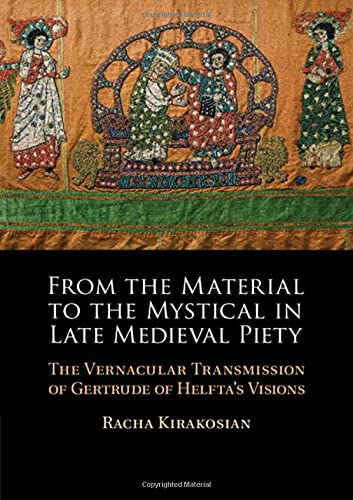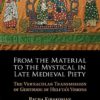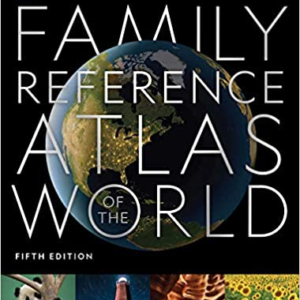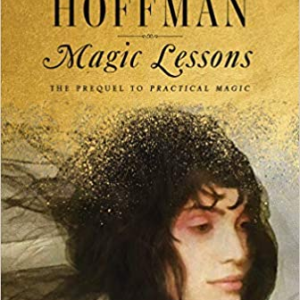From the Material to the Mystical in Late Medieval Piety: The Vernacular Transmission of Gertrude of Helfta’s Visions Hardcover – September 30, 2021 by Racha Kirakosian
HARDCOVER
[350 pages]
PUB: September 30, 2021
Description
Author: Kirakosian Racha
Brand: Cambridge University Press
Package Dimensions: 24x258x960
Number Of Pages: 350
Release Date: 31-12-2020
Details: Product Description
The German mystic Gertrude the Great of Helfta (c.1256–1301) is a globally venerated saint who is still central to the Sacred Heart Devotion. Her visions were first recorded in Latin, and they inspired generations of readers in processes of creative rewriting. The vernacular copies of these redactions challenge the long-standing idea that translations do not bear the same literary or historical weight as the originals upon which they are based. In this study, Racha Kirakosian argues that manuscript transmission reveals how redactors serve as cultural agents. Examining the late medieval vernacular copies of Gertrude’s visions, she demonstrates how redactors recast textual materials, reflected changes in piety, and generated new forms of devotional practices. She also shows how these texts served as a bridge between material culture, in the form of textiles and book illumination, and mysticism. Kirakosian’s multi-faceted study is an important contribution to current debates on medieval manuscript culture, authorship, and translation as objects of study in their own right.
Review
‘In exploring the Latin and vernacular production and reception of Gertrud von Helfta’s Legatus divinae pietatis, Racha Kirakosian is redefining late medieval authorship and the value of each redaction within the landscape of late medieval piety. Her book offers innovative and always exciting discoveries as she unpacks the vital transmission of Gertrud’s Legatus combining the scribal nature of late medieval piety with the textile culture of religious communities. Groundbreaking research, brilliantly written, a scholarly masterpiece!’ Hans-Jocher Schiewer, University of Freiburg
‘Like the textiles Gertrude’s writings and their translations so beautifully evoke, Racha Kirakosian’s book weaves together philological investigations, interpretive analyses, and unwavering attention to human communities to create a colorful, richly textured view of later medieval monastic life. Though rigorously centered on texts – their complex process of creation, reception, and transmission – this book has much to offer historians of art and material culture, female monasticism and reform, and the medieval religious imagination more broadly.’ Jacqueline E. Jung, Professor of History of Art, Yale University
‘This book draws on newly discovered evidence for the collaborative production of the Latin visions of Gertrude of Helfta (d. 1301) and proposes a new approach to reading the late fourteenth-century German translation, der botte der götlichen miltekeit. A complete analysis of the manuscripts of the botte, understood as examples of dynamic textuality, is combined with studies of text production, redaction, reading and copying, and an innovative discussion of the interplay between material culture and the presentation of textiles in the two versions of Gertrude’s visions.’ Nigel F. Palmer, Emeritus Professor of German Medieval and Linguistic Studies, St Edmund Hall, University of Oxford
Book Description
Examining correlations between the material and the mystical, this books investigates collective writing and devotional culture in late medieval piety.
About the Author
Racha Kirakosian is Professor of Medieval German at the Albert-Ludwigs-University Freiburg. She previously taught at Harvard University and the University of Oxford. A scholar of historical linguistics, medieval spirituality and church history, she is the author of Die Vita der Christina von Hane: Untersuchung und Edition (2017).
Be the first to review “From the Material to the Mystical in Late Medieval Piety: The Vernacular Transmission of Gertrude of Helfta’s Visions Hardcover – September 30, 2021 by Racha Kirakosian”
You must be <a href="https://webdelico.com/my-account/">logged in</a> to post a review.




























There are no reviews yet.